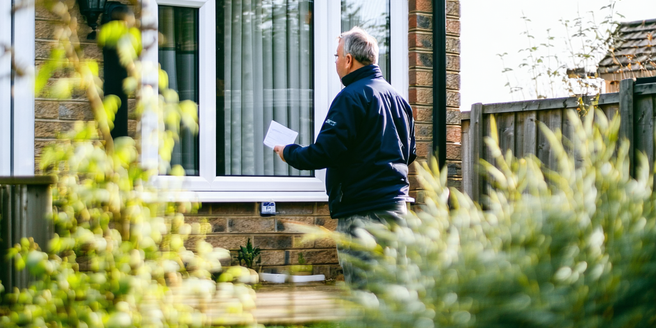How To Manage Apartment Rental Paperwork

Understanding Lease Agreements
| Lease Term | Rent Amount | Security Deposit |
| 12 months | $1,200/month | $1,200 |
| 6 months | $1,300/month | $1,300 |
| Pet Policy | No pets | N/A |
| Maintenance | 24/7 support | Included |
| Termination Clause | 60-day notice | N/A |
| Utilities | Tenant pays | N/A |
Organizing Important Documents
Managing a rental property involves handling numerous documents which can become overwhelming. It’s crucial to maintain a system for organizing important paperwork. Start by designating a specific place for all rental-related documents, whether physical or digital. Utilize folders with clear labels for each category such as leases, payment receipts, and correspondence. By having a designated place, you ensure easy accessibility whenever required. Consider using document management software that allows scanning and organizing files digitally. This way, you can reduce paper clutter and enhance security for sensitive information. Establish a routine schedule to regularly review and update these papers, ensuring everything is current and complete. An efficient system not only helps in quick retrieval but also aids in maintaining accurate records necessary for future reference or legal compliance.
Setting Up a Document Filing System
A well-organized document filing system is the backbone of managing rental paperwork efficiently. Start by sorting documents into different categories based on their nature and use, such as leases, legal correspondence, and maintenance records. Invest in a filing cabinet or a secure digital filing system depending on your preference. For physical paperwork, use clearly marked folders and arrange them alphabetically or by relevance. For digital documents, use cloud storage solutions that provide easy access and backup options. Include metadata for easy searching and retrieval. Keeping digital records requires consistency in naming conventions: include the date and a brief descriptor in file names. Regularly review and purge old, unnecessary files to keep the system streamlined. This approach minimizes clutter and ensures that essential documents are always up-to-date and easy to find.
Digital Tools for Rental Paperwork
In today’s digital age, various tools can assist in managing rental paperwork more efficiently. Property management software offers comprehensive solutions for tracking leases, rent payments, and tenant communications. Many of these platforms include mobile applications, making it easy to access information on the go. Cloud storage services like Google Drive or Dropbox can secure digital copies of important documents, offering ease of access and sharing capabilities. Furthermore, digital signature tools such as DocuSign facilitate quick and convenient lease signings. These tools not only streamline the paperwork process but also enhance security and reduce the risk of errors. Embracing digital solutions reduces reliance on physical papers, which can be lost or damaged over time, thus offering a more efficient way to manage rental properties.
Key Clauses to Look for in Leases
Understanding key clauses in a lease agreement is crucial for both renters and landlords. Begin by scrutinizing the rent amount, due dates, and accepted payment methods to avoid payment-related disputes. The security deposit clause should clearly state the amount, conditions for its return, and any deductions that might be applicable. Pay attention to the maintenance responsibilities clause to understand which party is responsible for repairs and upkeep. Additionally, examine the termination and renewal clauses, which outline the conditions under which the lease can be ended or extended. The pet policy, subletting terms, and any penalties for violation of lease terms are equally important. Thoroughly reviewing these clauses ensures both parties are aware of their rights and obligations, minimizing potential conflicts during the tenancy.
Handling Maintenance Requests
Efficiently handling maintenance requests is vital in maintaining a positive landlord-tenant relationship. Establish a clear process for tenants to report issues, preferably through a dedicated platform or contact method. Promptly acknowledge receipt of the request and provide an estimated timeline for resolution. Prioritize urgent matters such as leaks or electrical problems, ensuring they are addressed in a timely manner. Maintain a reliable network of contractors ready to handle common repairs and consult with them for cost-effective solutions. Keep a detailed log of all requests, actions taken, and communications for reference. Regularly inspect the property to identify and prevent potential issues before they become serious. A proactive approach to maintenance not only preserves the property value but also builds trust and satisfaction among tenants.
Tracking Rental Payments
Accurate tracking of rental payments is a fundamental aspect of property management. Utilizing a reliable payment tracking system ensures timely payments and helps avoid disputes with tenants. Consider using property management software that offers comprehensive payment tracking features, including reminders and reports. You can also integrate online payment systems to streamline the payment collection process, allowing tenants to pay rent conveniently through digital platforms. Maintain detailed records of each transaction, including the date, amount, and method of payment. Regularly review and reconcile these records to ensure accuracy. In instances of late payments, establish and communicate clear policies regarding applicable fees and resolutions. A structured approach to tracking payments fosters clear communication, transparency, and financial stability for property owners.
Legal Regulations and Compliance
Compliance with legal regulations is essential when managing rental properties. Stay informed about federal, state, and local laws governing rental agreements, tenant rights, and property maintenance. This ensures that your operations are legally sound and mitigates potential legal liabilities. Regularly review and update lease agreements to reflect the latest legal requirements. It’s advisable to consult with a real estate attorney to validate compliance with housing regulations. Additionally, keep abreast of any changes in housing laws that may impact landlords and tenants. Ensuring all transactions and interactions are consistent with legal standards not only safeguards the rights of all parties involved but also enhances the credibility and reputation of the property management business.
Preparing for Lease Renewals
Preparing for lease renewals involves several important considerations. Begin the renewal process well before the lease’s expiration to allow ample time for discussions and evaluations. Review the current lease terms and market conditions to determine if any adjustments are necessary, including changes in rent amount or lease duration. Communicate clearly with tenants about available options and any potential modifications to lease agreements. Evaluate the tenant’s rental payment history, maintenance of the property, and adherence to lease terms when considering renewal terms. Establishing a mutually beneficial agreement helps maintain a stable rental income and minimizes vacancy periods. Furthermore, ensuring tenant satisfaction encourages long-term residency and reduces turnover, contributing to the overall success of property management.
Checklist for Moving Out
Having a comprehensive checklist for moving out is beneficial for both landlords and tenants. Start the process by providing tenants with a detailed move-out notice, outlining key dates and responsibilities. Conduct a thorough inspection of the property, documenting its condition and noting any damages. Prepare a list of any repairs or cleaning the tenant is responsible for before vacating. Confirm and document the return of all keys and access devices associated with the property. Ensure a clear understanding of the security deposit return procedure, including potential deductions for repairs. Communicate with tenants about utilities transfer or disconnection, mail forwarding, and any final inspections. A structured checklist not only simplifies the process but also minimizes misunderstandings and conflicts as the tenant transitions out of the property.
